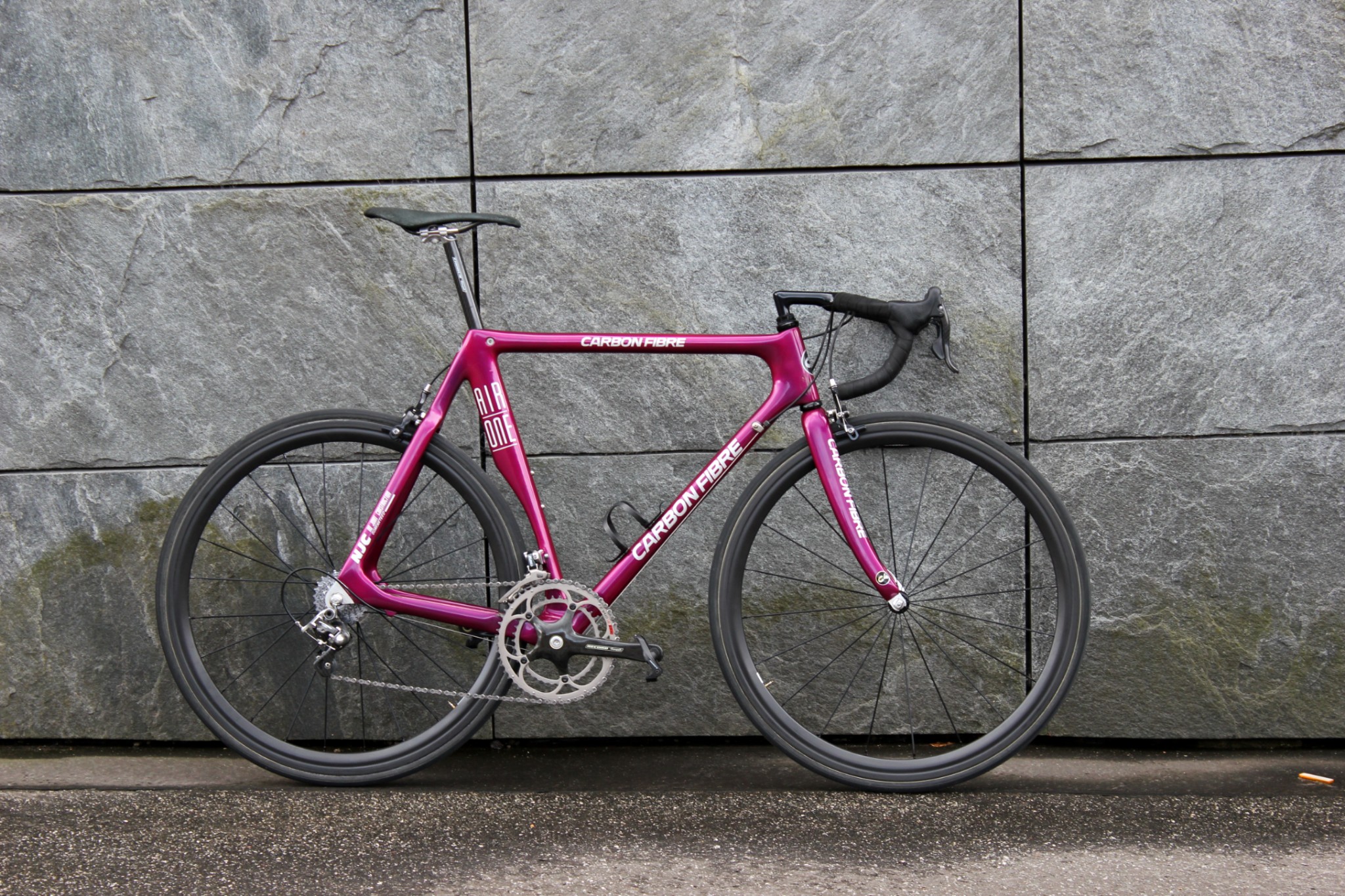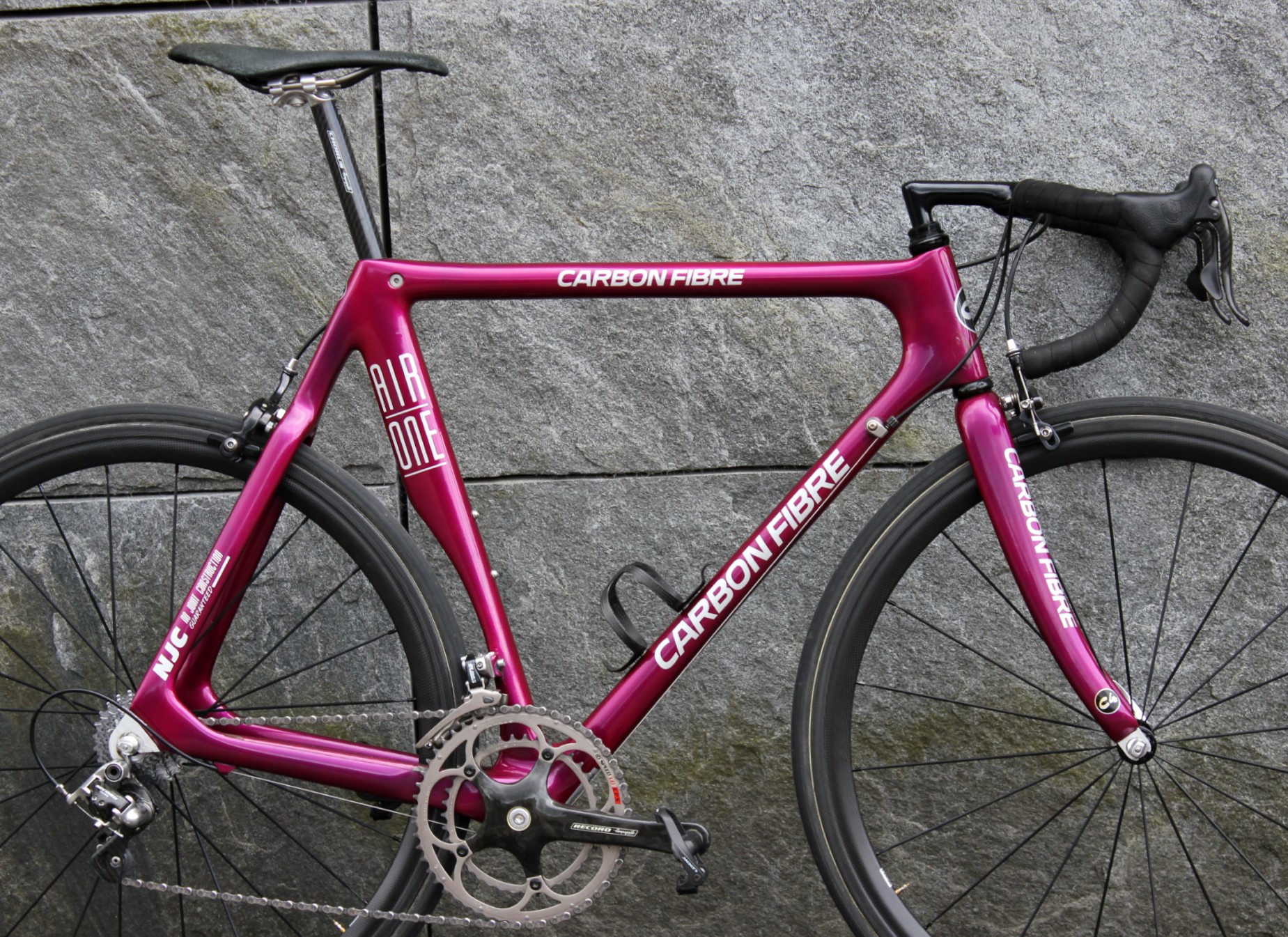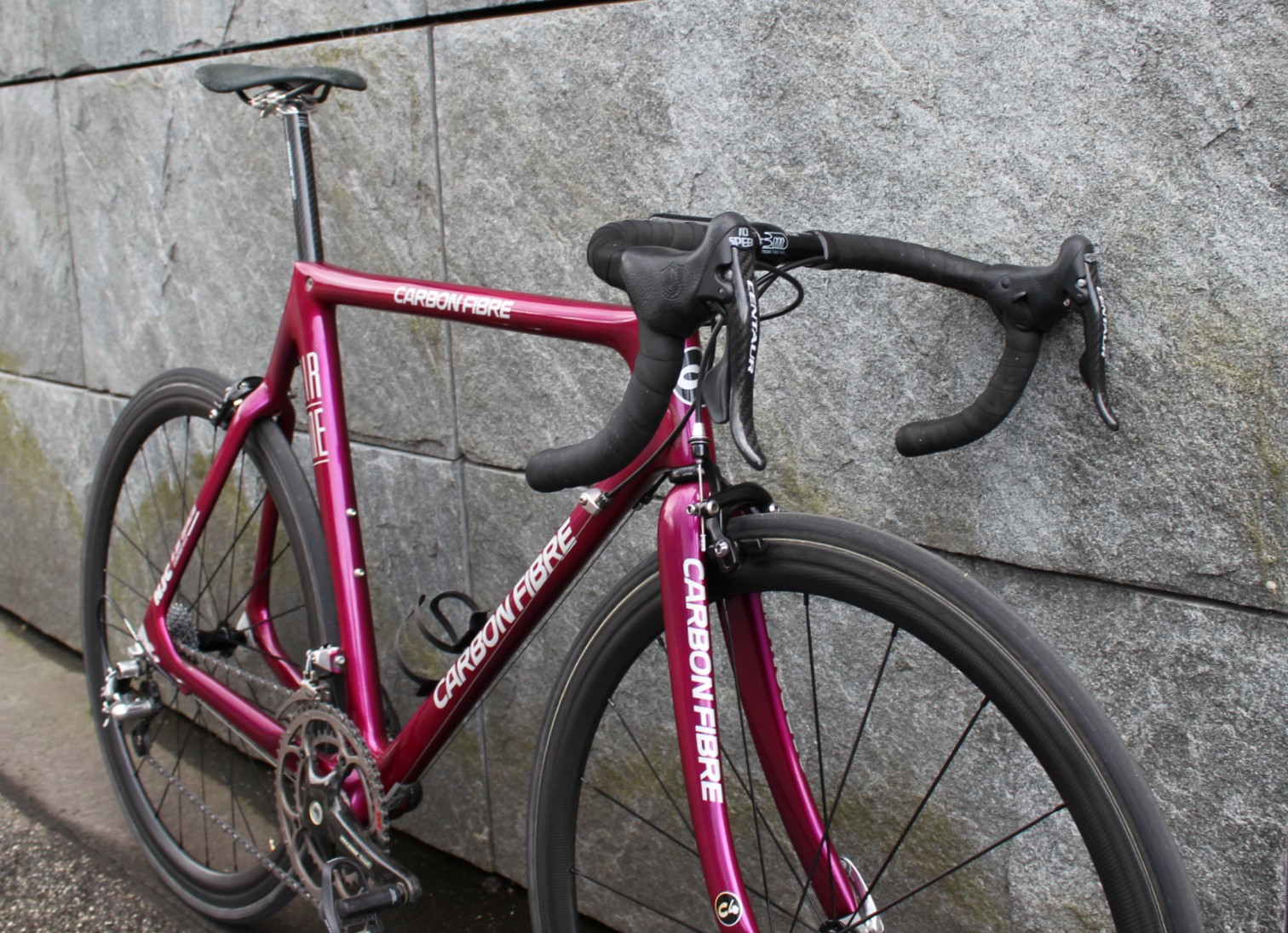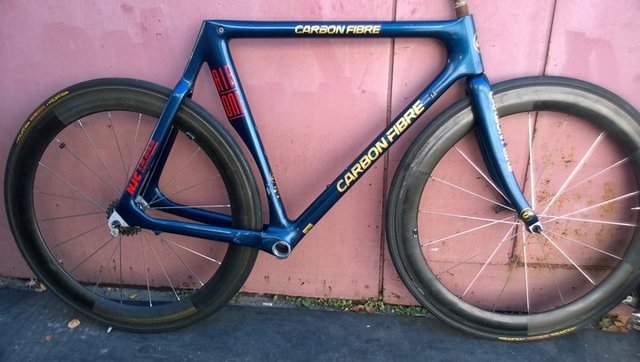Ein interessanter Beitrag aus Velocipedesalon.com über Rahmenbau in und um Lyon:
I thought that I might be able to help out with some background info on your Stronglight Altec frame.
The frames appeared around the same time as the better known TVT Carbone 92 models ie around the late 1980s, not all that coincidentally they originated from the same part of France..in and around Lyon in the Rhone valley. Most French carbon-fibre based frames came from this area due to the fact that the weaving of the base materials was a natural development of the area's expertise in weaving silk.
The ALTEC frame is credited as being the bright idea of a chap called M. Ribeaucourt who was based just outside Lyon; he was a very close friend of Alain Darrin, the then President of the frame manufacturer TVT - the tubes for the TVT frames being made just up the road from Lyon in the general direction of Chambery, in the idyllic small town of St Genix-sur-Guiers; here in the factory of TCT - the parent company of TVT, the carbon fibres were knitted into stockinette , seven layers of which were then bonded together by the RTM process (resin transfer moulding injection) to produce tubes.
At the time all these frames were seeing the light of day I was the UK importer for TVT..from 1987 onwards. On one occasion M Darrin asked me if I would be interested in promoting ALTEC frames alongside the TVT product; this request was a measure to help his friend, Ribeaucourt's business. The latter had already launched similar-looking frames under the ALTEC brand - but these used aluminium tubes instead of carbon-fibre ones - and were meant to cash in on the vogue for riding bonded aluminium frames established by the VITUS Duralinox 979 models.. It was from this generation of metal frames that ALTEC drew its name. Some of these early frames found their way into the Tour de France under the Spanish BH brand - I think that they were anodised black at the time. Stronglight also marketed some under its own name.
I have no hard proof of the following statement but suspect that my reasoning is very sound. ALTEC was only a small business, one which really did not manufacture goods but simply sold on goods that were built by subcontractors. The aluminium alloy tubes used in the first ALTEC frames came from France's largest supplier PECHINEY who had factories in the Rhone valley. I suspect that the carbon tubes used for the carbon ALTECs was produced by TCT (Technique Carbone Tisse) - the parent company of TVT ( Technique Verre Tisse) TCT manufactured a very large range of high tec tubing for such applications as aerospace, telecommunications, sporting goods such as golf-clubs, yacht masts etc etc. Among the range of high-performance tubes were those which were simply carbon and others which had a blend of kevlar, known as HM carbon. The weave and dimensions of the actual carbon strands were also slightly different. I suspect that the ALTEC frames used TCT's HR tubing - the ones without the kevlar. as had the first generation of TVT frames produced in and around 1980.
All the metalwork for the ALTEC frames ie the lugs, drop-outs, bracket shells etc etc came from the same factories that produced the same articles for TVT and had already produced for earlier brands such as Duravia and CMP. -= all based in and around Lyon. Vitus on the other hand produced most but not all of their metal parts in St Etienne. The factories involved were based in either Grigny or Brignais, small suburbs to the south of Lyon. La Fonderie St Georges cast all the aluminium parts before they were transported in large steel mesh cages around the corner to the machine shop of Lyon Raccords whose owners were a couple of oily-handed gems called M Besson and Mallarte. These two very committed engineers and their small band of enthusiatsts transformed rough castings into shiney precision parts before passing these parts onto the neighbourhood polishing shop who added the final lustre. I had the pleasure of meeting all these guys and spending happy times in their workshops. Unfortunately when LOOK bought out TVT with the intention of dissolving the company, the likes of Lyon Raccords went into insolvency..but later reinvented itself as Duracycles - from whence it carried on machining cycle parts and actually fabricating their own small range of carbon and aluminium-bonded frames. If any of you have a Stronglight seat-pillar in one of your bikes this product came through the same route and small factories as the ALTEC and TVT lugs. Stronglight simply stuck a sticker on other people's work...as they did with the Stronglight ALTEC frames.
What is not known definitively is the name of the firm that actually bonded the ALTEC frames together. However..some years down the road in about 1994/5 I was contacted by another small Lyon-based manufacturer of carbon-fibre frames - GUICHARD Composites whose factory was in the NE suburb of Villeurbanne. A visit to the small neat factory indicated that the firm manufactured the well-known Alsthom-Discjet carbon-fibre disc wheel - no doubt subcontracted from Alsthom itself. I had been contacted to ascertain my interest in marketing the GUICHARD of carbon-fibre tubed racing frames branded MACH-1.
To all intents and purposes these were Ribeaucourt's ALTEC frames--identical in every detail and I have no doubt that this small dynamic company of about six employees had bought out the manufacturing rights from Ribeaucourt..or else they had developed the ALTEC frame and then contracted with Ribeaucourt to market them. Production was small, frames could be custom-built..attention to detail was excellent as was the high quality finish. It was in this factory that I had the advantages of the straight-bladed bonded carbon-fibre front fork explained to me. I suggested that they used straight blades because the mould was far cheaper to produce than a mould for a curved blade.The fork builder a gentle giant nicknamed 'Gitane' the Gypsy..set me straight on its advantages. He used them..and he had no desire to meet an early death..was his explanation. Of course this fork went onto fame and fortune as the TIME fork..supplied in large quantities to Colnago.
A visit to the carbon-fibre frame producers of the Lyon area during the period 1983 -94 was quite delightful..a wonderful bunch of enthusiasts supported by a small band of highly skilled back-street professional engineers supported in turn by big industries such as TCT..the cycle industry at its best..great interdependence..all in it together..all on first name terms..always a bottle of Rhone wine ready at snap-time.
The all-consuming Taiwanese cycle industry cut an end to all the dreams and hopes of these companies, as companies such as Specialised and TREK sub-contracted all their manufacturing to the Far East.
The remains of TVT, staff such as Jacques Paillet and Georges Million, went on to manufacture a small range of high quality carbon-tubed frames - in reality TVT MkII - under the brand name RBE Composites, based in Brignais, south Lyon and employing the same engineers to produce the aluminium castings and machining, while GUICHARD Composites developed the first Peugeot thermoplastic/carbon monocoque frame. Now..all these companies have disappeared.
I feel very privileged to have been involved with these engineers in these companies at this particular time in the history of the French cycle industry. At any time, if there was any problem at all with one of their products..a solution was only a telephone call or a Fax-message away. These were not faceless companies at the other side of the world..these were companies producing excellent high-end equipment made by people with whom one could relate on a man-to-man basis over a glass or two of Cotes de Rhone wine. I fear that such industries are gone forever.





 ein ähnliches Konzept nur mit den Möglichkeiten der 90s zu Ende gedacht und optisch sehr schön umgesetzt - aber darüber kann jeder für sich selbst urteilen...
ein ähnliches Konzept nur mit den Möglichkeiten der 90s zu Ende gedacht und optisch sehr schön umgesetzt - aber darüber kann jeder für sich selbst urteilen...
